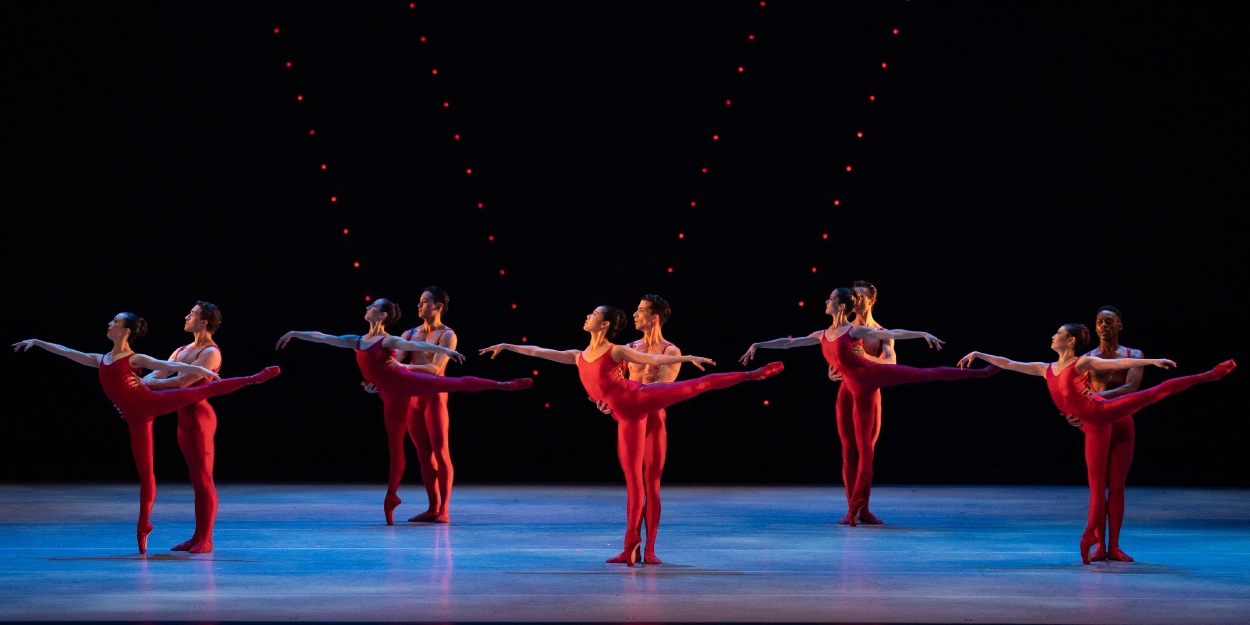Review: 10,000 DREAMS DANCE FESTIVAL - PROGRAM A at The Kennedy Center
Onstage through June 23

The Kennedy Center’s 10,000 Dreams: A Celebration of Asian Choreography is an ambitious and moving showcase of some truly outstanding ballet works. Featuring two programs and a one night only tribute to Choo San Goh, the festival includes performances by Ballet West, Dana Tai Soon Burgess Dance Company, Goh Ballet featuring dancers from the National Ballet of China, Houston Ballet. Pacific Northwest Ballet, Singapore Ballet, and The Washington Ballet.
Phil Chan, a choreographer and co-curator of the festival, served as the Master of Ceremonies at both of the performances I attended, bringing wit and reverence to the role. Stunningly dressed in what I imagine were custom-made suits in jewel-toned Chinese brocade, Chan made the purpose of the evenings both urgent and personal by reflecting on the racist legacy of orientalist fantasy in The Nutcracker and other ballets and the historical lack of representation for Asian dancers and choreographers. We are lucky to have his leadership, along with Georgina Pazcoguin, as they work to enact change in ballet companies globally. If the works featured in the festival are any indication, there is a wealth of talent ripe for the stage.
Program A featured three works by choreographers of Asian descent who are active today, as part of the festival’s aim is to raise awareness of and commissions for working choreographers. The first piece, home-coming by Brett Ishida, was danced by The Washington Ballet and is a meditation on loss and grief. The haunting work, set to music by Nicholas Britell and Michael Nyman, showcased The Washington Ballet dancers’ excellent pointe work but also their acting chops. The sadness of losing a loved one was palpable, movingly illustrated by Ishida’s insistence that the choreography be less than pretty - even awkward - at times. This is a daring choice in classical ballet, and a successful one.
The second work by Caili Quan, Play on Impulse, was danced with joy and abandon by Ballet West. An utter delight to watch, Quan fuses intricate walking patterns with rhythmic bursts of intensity, set to popular songs from a range of rock and pop artists such as The Velvet Underground, Deee-Lite, and Bjork. The vignettes offer the dancers many opportunities to personalize the steps, showcasing their unique skills and creativity, and it’s simply fun to see them enjoy themselves so much, especially when dancing with each other. The partnering work included pairings of all combinations: men with men, women with women, men with women, in twos, threes and more, and was void of commentary. This is just how people today dance together and love one another. I suspect this new work, which premiered earlier this month, will prove popular and be produced by other companies in short order.
Tuesday's final work was The Veil Between Worlds by Edward Liang, the new Artistic Director of The Washington Ballet, and danced by Pacific Northwest Ballet. Performed to live music from The Kennedy Center Opera House Orchestra, this work started strong with crisp partnering and deft footwork. The dancers of PNB are technically facile but, in contrast to the dancers of the two earlier companies, offered inauthentic smiles rather than nuanced interpretations. By the end the steps felt tired and predictable, but that may be more a reflection on the interpreters. I hope Liang will set this work on The Washington Ballet so I can see it again and study it closely.
Friday night was a special performance dedicated to Choo San Goh, a pioneering Singaporean choreographer who served as Associate Artistic Director of The Washington Ballet during the 1980’s. Goh passed away at a young age and unfortunately his ballets are no longer produced as frequently as they once were. His ballets, while highly technical, emphasize expression above all. Friday’s performance included three works by Goh and another three by Asian American choreographers inspired by Goh. The range of ideas explored in Goh’s ballets - both choreographically and technically - was astounding, from port de bras and use of classroom exercises to dancing in silence versus syncopation. While not always successful, it’s refreshing to see this degree of daring and rightly justifies the place of honor Goh holds.
Both performances included a short film about Goh created by The Kennedy Center to honor him and raise awareness of his story. This eloquent tribute featured stories from friends and family who worked with him both here in Washington and globally. As Liang takes the helm at The Washington Ballet I hope we’ll be seeing more Goh works performed in the near future, as well as some by the other talented choreographers featured in this festival.
The festival runs through Sunday, June 23 with Program B playing over the weekend.
Program A Run Time: 2 hours, 20 minutes including two intermissions. Friday Tribute to Choo San Goh: 2 hours with one intermission.
Photo Credit: Artists of The Washington Ballet in Choo San Goh's Fives. Photo by Teresa Wood
Reader Reviews

Videos

